DAPs are dead. Long live DAPs. Apparently everyone at Astell&Kern missed the memo. Having just reviewed the Cayin N7 and Astell&Kern SR35, I was rather surprised when the Korean manufacturer asked me if I wanted one of the first samples of the new Astell&Kern SE300 DAP before it was even made available.
If the SE300 DAP seems like it fell from the sky without any warning, let us take a step backward in time for some DAP history.
The original A&futura SE100 was a departure from A&K’s practice of using AKM DAC chips; that particular player used the ESS 9038 PRO 8-channel DAC instead. It is actually quite common to see the 2-channel version of the 9038 chip used in portable gear, but the 8 channel PRO rarely gets implemented in that way.
That DAP was followed by the Astell&Kern SE100.M Chat; a limited edition SE100 unit featuring Monsieur Chat art work and a very distinctive looking green anodized frame. Internally, it was the same exact player and offered similar performance.
The A&futura SE200 DAP was a lot more unique; it pioneered using dual DACs which included the AKM 4499 or ESS 9068AS.
Astell&Kern then introduced the A&futura SE180 which offered modules featuring the AKM 4497 (SEM2), ESS 9038Q2M (4 DAC chips), or the AKM 4493 paired with digital remastering technology.
Confusing to say the least.
Climbing The Ladder
The SE300 is a complete redesign and the design decisions will certainly make it unique. Not only is the DAP not modular, but it also does not offer a choice of either AKM or ESS DAC chips.
The Korean manufacturer has gone slightly rogue by not using an off-the-shelf DAC chip at all; the player uses a fully discreet R-2R resistor ladder DAC and also offers the ability to select between oversampling and non-oversampling modes.
The SE300 user can select between class AB or A amplification and there are other features that have trickled down from the A&ultima SP3000 ($3,699) that is one of the top DAPs currently available. A small chassis also makes it a rather potent DAP that is easier to carry around.
Because this was a pre-release sample (without the standard packaging and accessories that come with the retail version), it was delivered pre-loaded with music.
Buyers will get the usual accessories including the extensive manual, USB cable, screen protectors, and high-end packaging. A case is available at an additional cost. There will be plenty of third-party cases available once this DAP becomes widespread in the market.

The player is 5.5″H x 3″W x .75″D with the same 5.50″ display used in the SP3000 with a brushed aluminum and glass frame; the highly polished panel gives it a very distinct look. The SE300 has a decidedly rectangular shape but the sides are bowed slightly inward around the controls and then outward below them on either side breaking up an otherwise boxy silhouette for an A&K player.

The left side, top, and bottom front are aluminum whilst the right hand side is aluminum with a polished stainless insert and a large volume knob of matching polished steel with a flower motif and a central polished brass accent.
An LED indicator is tucked neatly away at the base of the volume knob which has become a common feature of A&K DAPs. The top panel offers a 3.5mm, 4.4mm, and 2.5mm ports from left to right, with the power button positioned on the far right.
The left side panel houses 3 buttons for reverse, play/pause, and forward. The bottom panel has a micro-SD card slot (supports up to 1TB card) and a single USB Type-C port for charging and data transfer.

From a weight perspective, the SE300 is not one of the lightest DAPs that I’ve carried with me on my daily commute at 12 ounces, but it was still rather manageable because of the smaller chassis. The flagship SP3000 is a tougher carry if you don’t have a laptop bag and plan on using a jacket pocket.
The polished steel and glass chassis works (for me) from an industrial perspective, but one will need to invest in a good case to avoid nicks and scratches which will certainly show up if left unprotected.
Technology
The SE300 uses a quad-core processor, presumably a Snapdragon, with 256GB of internal storage to power the Crimson UI. This is third model to sport the new UI behind the SP3000 and the recently released SR35.
What did surprise me was the performance of the SE300 compared to the SP3000 that utilizes an octa-core CPU; the less expensive DAP operated with the same level of responsiveness and we are wondering if the Crimson UI has been updated since its original release or is the SP3000 overloaded in the processor department just to provide greater margin for expansion.

The SE300 supports both 2.4 GHz and 5 GHz Wi-Fi as well as bi-directional Bluetooth 5.0. LDAC transmit and receive are both supported on the SE300 as well.
As mentioned previously, most of the current A&K lineup has utilized the AKM, Cirrus Logic, or ESS Delta/Sigma DAC chips; the SE300 eschews the single chip DACs in favor of a discrete 24-bit R-2R resistor ladder.
Ladder DACs pre-date Delta-Sigma and because each bit is processed directly they eliminate the need for feedback loops and can technically be more accurate than their Delta-Sigma counterparts.
The problem has been that all resistors in the ladder must exactly match every other resistor or that potential accuracy is lost due to the imbalance.
For that reason, ladder DACs have typically been the domain of extremely high-end products because finding enough perfect resistors to build a ladder is a very time consuming and labor intensive task.
Most resistors available at parts warehouses are +/- 5% while high precision resistors are +/- 1% and the need for an R-2R ladder is +/- 0.1% or better so even parts sold as precision parts are not matched well enough to use out of the box.
This also adds to the cost because in order to get enough matched resistors to build a DAC, the manufacturer might have to purchase 20 to 50 times the amount needed to find enough perfectly matched resistors to complete the project.

Portable products also have to contend with the fact that ladder arrays take up a huge volume of space compared to a Delta-Sigma DAC and cause both size and heat problems when placed in smaller devices.
New miniaturization technology and surface-mounted designs have greatly reduced the space required making products like this possible.
The SE300 uses 48 resistors per channel; each device needs 96 precision matched resistors which until recently was more labor intensive than the market would bear.
But with resistors matched to 0.1% now available directly from several sources, the SE300 became more viable as a product.
The SE300 also leverages a custom field programmable gate array (FPGA) that offers the user both oversampling and non-oversampling modes allowing the listener to select between doing more of the work in the digital domain (oversampling) or analog domain (non-oversampling) with oversampling potentially offering some of the benefits of a higher bit-rate source but not remaining true (bit-perfect) to the original source file like non-oversampling.
The combination of the FPGA and R-2R DAC allow the SE300 to handle most popular formats including AAC, AIFF, ALAC, APE, DFF, DSD, DSF, FLAC, MP3, OGG, WAV, and WMA.
PCM formats are supported at 32-bit/384kHz while DSD is supported at 256x.
MQA is also supported by unpacking to PCM in the FPGA before feeding the signal to the ladder DAC.
The ladder DAC/FPGA circuit then feeds a dual mode amplifier with user selectable class A and class AB modes further allowing the listener to sculpt the sound to their liking.
There are also two gain modes; normal and high, which allow the user to tailor the output to their headphone or IEMs. Using the single-ended output, normal gain provides 2Vrms, switching to high gain increases that to 3Vrms.
The balanced outputs offer 4 Vrms on normal gain and 6 Vrms on high gain (A&K doesn’t specify the load used in measuring the outputs). All of the outputs offer a line-out mode as well with the 3.5mm port also acting as an optical S/PDIF output if required by the user.
The SE300 provides 256GB of shared internal storage for apps and music along with a micro-SD card slot supporting up to 1TB cards and even USB Type-C OTG which allows connecting an external HDD with even more capacity.
I did find that scanning in extremely large volumes of files takes some time and that album art is loaded subsequent to the actual file data so for the first few minutes after adding a new card you see a lot of placeholders rather than images.
Once loaded, the UI interface is quite fast in actual operation and that was with over 20,000 files uploaded.

User Interface
The new Crimson UI arrived late last year with the SP3000 and has only been integrated into the aforementioned SR35 as well. The new UI is still a closed Android system so don’t expect to see the Google Play Store just yet.
Crimson is more user friendly, at least in my opinion, and markedly quicker than the earlier A&K OS, although it does seem to be somewhat CPU dependent as both the SE300 and SP3000 are noticeably faster the SR35 with its lesser specs.
While Crimson is a new OS, those already familiar with A&K DAPs will feel right at home. Starting the player first displays Astell&Kern logo and then yields to the song carousel.
This allows the user to flip through the tracks and view album art but be aware that the track being displayed is not the track playing — that is shown at the bottom of the screen along with playback controls.
Clicking the now-playing track switches to the player view which has changed little from other A&K players like my Kann Alpha and SP2000.
When viewing the carousel page, controls and settings can be accessed by clicking the ellipsis in the upper left corner while the library can be accessed via the dual box icon at upper right.
The menus and settings are similar to older versions but a few new additions like playback controls added to the navigation bar (swipe down from the top) so you can still control your music while adjusting settings, and a non-floating back button making it easier to navigate the settings menus.
For those of us that use the random function a lot, the home button will open the carousel and start at a new song each time. Disabling the carousel is possible and doing so sets the home button to take you to the first song in the list similar to the older version of the OS.

The Home button can be found in the bottom navigation bar with the services icon at far left and a back button at far right. I appreciate this new placement of the back button as the previous OS version used a floating back button that always managed to obscure the thing I was trying to do.
Swiping down from the top shows the navigation bar, brightness control, and a row of control icons for enabling Wi-Fi, Bluetooth, oversampling, amplifier mode, EQ, car mode, line-out mode, gapless, wheel lock, and settings.
Most of these buttons are simple on/off or selection options (amp, oversampling), but other settings open sub-menus.
Touching EQ turns it on/off while touch and hold will open the EQ so adjustments can be made.
The EQ is still the quasi-parametric EQ found on other recent models and I keep hoping A&K will upgrade it to a full parametric EQ but so far it is still the 20 band semi-parametric where you can adjust the amplitude of each band but not the central point of each band; bands are fixed at 30Hz, 45Hz, 60Hz, 90Hz, 120Hz, 180Hz, 250Hz, 380Hz, 500Hz, 750Hz, 1k, 1.5k, 2k, 3k, 4k, 6k, 8k, 12k, 14k, and 18kHz.
I do appreciate the ability to see the graphic of how the adjustment fits in the overall frequency range while making adjustments.
For those not interested in curating a collection of files locally, the SE300 has TIDAL (without offline file support) and V-link built in and the ability to install many other streaming services via the services tab in settings.
Wi-Fi has to be enabled and connected to install Spotify, Amazon Music, Qobuz, Apple Music, Deezer, FLO, TIDAL (with offline support) and many other regional services. Apps can also be installed by using APK files but be aware that services installed via APK are not guaranteed to work.
Firmware updates can also be delivered via Wi-Fi although the update to the pre-release player required loading to a micro-SD card for proper installation.
The process was simple so if an update arrives that cannot be delivered OTA, an alternate method does exist without complicating matters in the process.

Battery Life
The SE300 sports a 5050mAh Lithium-ion polymer battery that gave 14 hours on normal gain using local files at reasonable volume and closer to 12 hours using Wi-Fi and streaming Qobuz at similar volume.
Switching to high gain does drain the battery a bit faster but I was still able to get a little over an entire business day (9.5 hours) before needing to recharge the player.
Charging takes about 4 hours from depleted using a QC charger. Using a standard charger will take much longer so be sure your charger supports QC 3.0 and 2.1 amp charging.
Sound

Describing the sonic performance of a DAP is really dependent on the source material and the types of headphones and IEMs on the other end; we do our best to use a mix of popular audiophile models to create a baseline that will be of value to readers.
The first thing I noticed with the Campfire Andromeda on normal gain was that the SE300 is a touch warmer than neutral particularly in the default NOS mode as the Andromeda is usually a bit brighter to my ear.
It is still slightly warmer sounding than neutral in OS mode but there is a notable difference between the two with NOS being smoother and more organic vs OS which is a little closer to neutral and with rougher edges in the treble.
Using several other headphones and IEMs also demonstrated the same warmth and coloration with NOS mode so this was definitely the DAP and not just the pairing.
In this regard, the SE300 is closer to the KANN Alpha than the SP2000 albeit a bit more resolving than the Alpha and a bit less than SP2000. Don’t expect the SE300 to turn a bright IEM into a warm one as the deviation is not pronounced, but instead is just enough to give vocals a touch more weight and strings a touch more body.
Also noteworthy was the noise floor when using the Andromeda; the Campfire IEMs have a hiss issue and with most sources, you most certainly hear it. With the SE300 — you could barely hear it all depending on the volume level and setting.
I could only hear it with music turned off and volume turned up to 100% on normal gain and even switching to high gain it wasn’t particularly notable until roughly half way up the volume ladder with music turned off.
When music was playing it was imperceptible unless levels were above normal listening by a considerable margin. This left me a little concerned that it might struggle with hard to drive headphones, because DAPs with considerable output power also hiss formidably when paired with the Andromeda.

So I switched to the Fostex T50RP which is known to have the sensitivity of a rock; admittedly mine have been modded so I was using the balanced output which gave them a bit of a boost, and while listenable on normal, they definitely had more headroom on high gain.
Here is where I also noticed that the difference in class A and class AB was more about tonality than additional power. Class A was a bit more fluid but slower than class AB which had a more assertive attack and more definition by comparison.
Classical music benefitted from class A amplification where the fluidity of strings and piano was more realistic while rock, drum and bass, pop, and other percussion heavy genres favored the class AB amplification where percussion snap was sharper and guitar growl had more of an edge and sounded more realistic.
The soundstage was well proportioned with all of my test headphones but not cavernous even when paired with the HD800 (just for testing stage). Instead, what is presented is a medium sized stage with tightly defined positions and easily discernable movements in the space.
Imaging is good, aided by excellent instrument separation which made seating the orchestra straight forward with no gaps or overlapped positions.
All of my testing up to this point involved using the SE300 as a DAP using Qobuz, some downloaded files, and with wired IEMs and headphones.
I also used some TWS IEMs (Sony WF-1000XM4) and wireless headphones (Focal Bathys). The SE300 offers far more functionality than just being a streaming DAP though so I spent some time putting it through its paces using its other features.
I had to test the LDAC receiver as it was a new feature so I used my Sony WM1A to stream to it. This is definitely not something people are likely to do in real life but it did achieve the goal of connecting a Bluetooth source to the SE300 via LDAC and it worked as expected.
In order to use the SE300 as a receiver, one does have to enable the Bluetooth sync mode in settings and any connected earphone or headphone will be dropped so the SE300 cannot operate as both transmitter and receiver at the same time.
Switching gears, I decided to put the USB port through its paces. Using the SE300 as a source I tried connecting the USB port to my main system DAC and using the SE300 purely as a transport.
Again, it worked exactly as expected. Flipping the script, I connected the SE300 to my laptop and used the SE300 as a USB DAC/headphone amplifier. To do this, the user does have to go into the settings and set USB to DAC mode. Otherwise, the unit will not decode your music files.
Next up was the line-out and optical output. Running a Mini-Toslink to Mini-Toslink cable between the SE300 and my home system again resulted in the anticipated results with no fuss. Again, output on the SE300 is set to 100% when using the optical output so it assumes a downstream volume control in your system.
Running a 4.4mm to dual 3-pin XLR cable between the SE300 and my pre-amplifier yielded similar results although here I did have to put the port into line-out mode as by default it remained in PO mode with volume control remaining active on the DAP itself.
Line-out mode does have output power choices though, so the port is not locked at 4 Volts but instead offers 1.4V, 2V, 2.5V, and 4V options with balanced outputs and 0.7V, 1V, 1.25V, and 2V with single-ended outputs.
This allows the SE300 to work with a wide variety of both consumer and pro electronics that expect differing voltages on their line-in ports.

Conclusion
I’ve mentioned the SP2000 and 3000 as well as the KANN Alpha in my notes so far but think I’d be remiss not to add a few notes comparing the Cayin N7 to the SE300 because they have similar price points and both depart from the standard chip DAC by using discrete resistor based DACs albeit two different architectures.
Both are similar in size and weight and both are built well so it will be hard to separate the two physically.
Battery life favors the SE300 but output power favors the N7; however neither wins by a huge margin and at times the additional power may be a detractor (when using sensitive IEMs).
Despite both using discrete resistor based DACs, the two are quite different. The N7 first converts all inputs to DSD and then processes that through its resistor based DAC.
The SE300 does that conversion differently; DSD has to be handled by the FPGA chip as the ladder DAC is designed specifically to decode PCM-encoded files.
It makes sense to select the model that matches the majority of your source material; the Cayin’s ability to handle native DSD should certainly give it an edge in that respect, but if most of your files are PCM, the SE300 has a shorter path from source to ear and is likely the better option.
Despite the differences, both DAPs have more in common as it pertains to their respective tonal balance and presentation; the Cayin is slightly brighter with more of an edge in the treble range, whilst the Astell&Kern SE300 sounds slightly more relaxed and tonally rich.
Both are great examples of DAPs that would not have been possible in the portable space a few years ago due to size and cost of resistor matching, but ultimately the target audience of each style of DAC is slightly different and will likely drive individual purchasing decisions.
Does the Astell&Kern SE300 which exists within its A&future lineup make sense at the $1,900 price point?
When you add up the performance, discrete R-2R DAC, dual amplifier modes, Crimson UI, and new Bluetooth features — this might be one of the best performing DAPs in the entire A&K catalog.
There is little to complain about when it comes to the industrial design, connectivity options, and overall solidity of the product. The battery performance is enough to last an entire day and the Crimson UI feels very snappy even with so many files loaded and the demands of hi-res streaming.
What sold me at the end of the day was the tonal balance and fluidity of the sound; this is one DAP that I could live with for the long-haul and it had more than enough power for most of my headphone and IEM collection. Does Astell&Kern even know how good this DAP is? A lot of lucky music listeners are about to find out.
For more information: astellnkern.com
Where to buy: $1,900 at Audio46



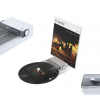

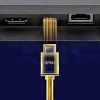
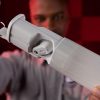









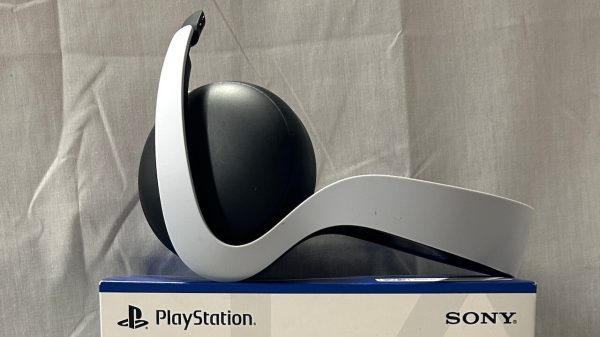
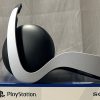
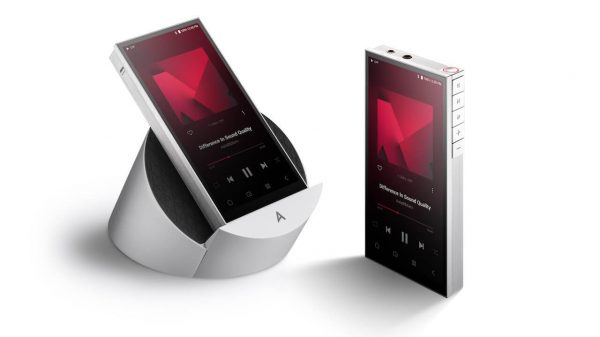
















jos
July 23, 2023 at 5:23 pm
Is it worth trading in an AK 25mkii for the se300?
can I hear the difference